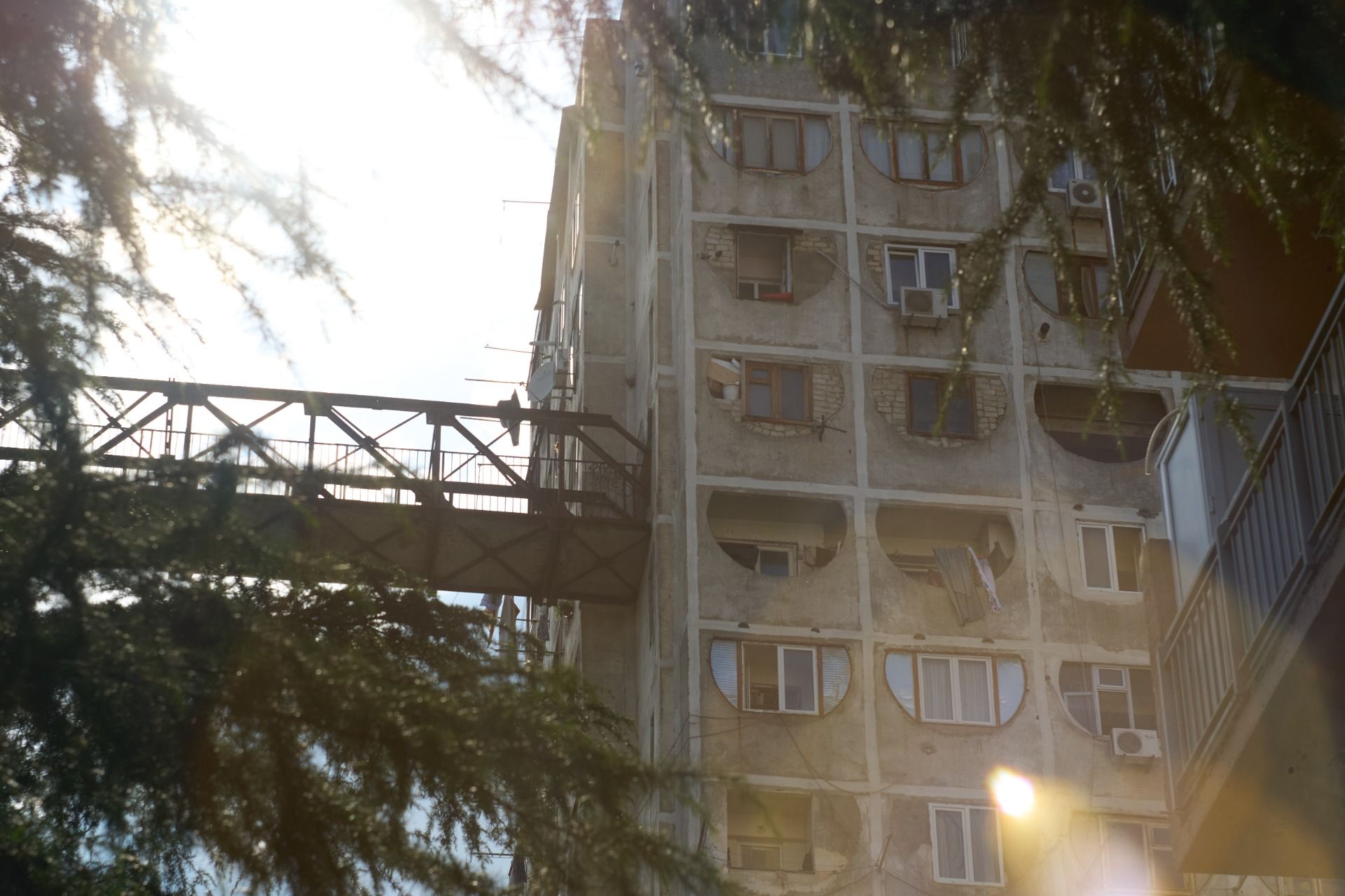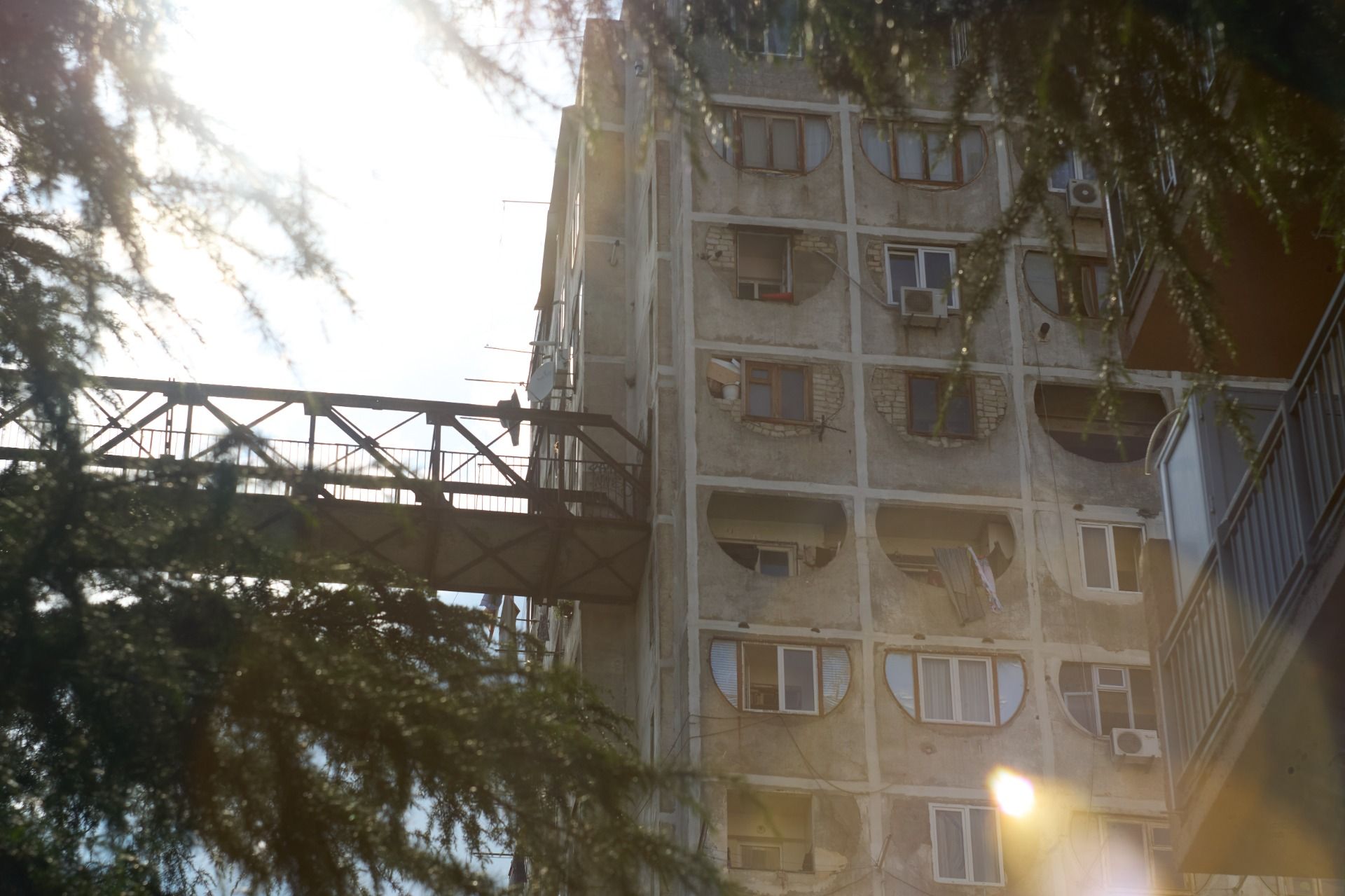
I recently moved into the area of Saburtalo in Tbilisi, Georgia. Little did I know, this area is also home to one of Tbilisi's most interesting brutalist designs. This is the skybridge, a Soviet era idea that combined three apartment high rise buildings together by a bridge. It sounds like an odd idea, right? But it's one that actually makes sense to some degree. These three buildings are on varying levels due to the hilly landscape of the city, an environment that often has you walking up and down and through twists and turns. The bridge starts from a normal road and brings you to the first apartment building, to which each time you cross, you find yourself much higher up as you approach the next. It's a great way to combine these three apartment buildings and keep them combined in a more community sense; there's the Soviet mentality of keeping people connected which is heavily present in how people would cross the bridge from each apartment building to get to the main road. Alternatively, there are elevators which bring you to the ground floor of each apartment in the event you didn't want to get to that main road.
The buildings were constructed within the mid 70s, each apartment building holding its own designs that allow each one to stand out despite being connected. My favourite one is by far the last building connected to the skybridge. With a wooden style on one side that screams 70s, and a very beautiful concrete pattern on the other side.
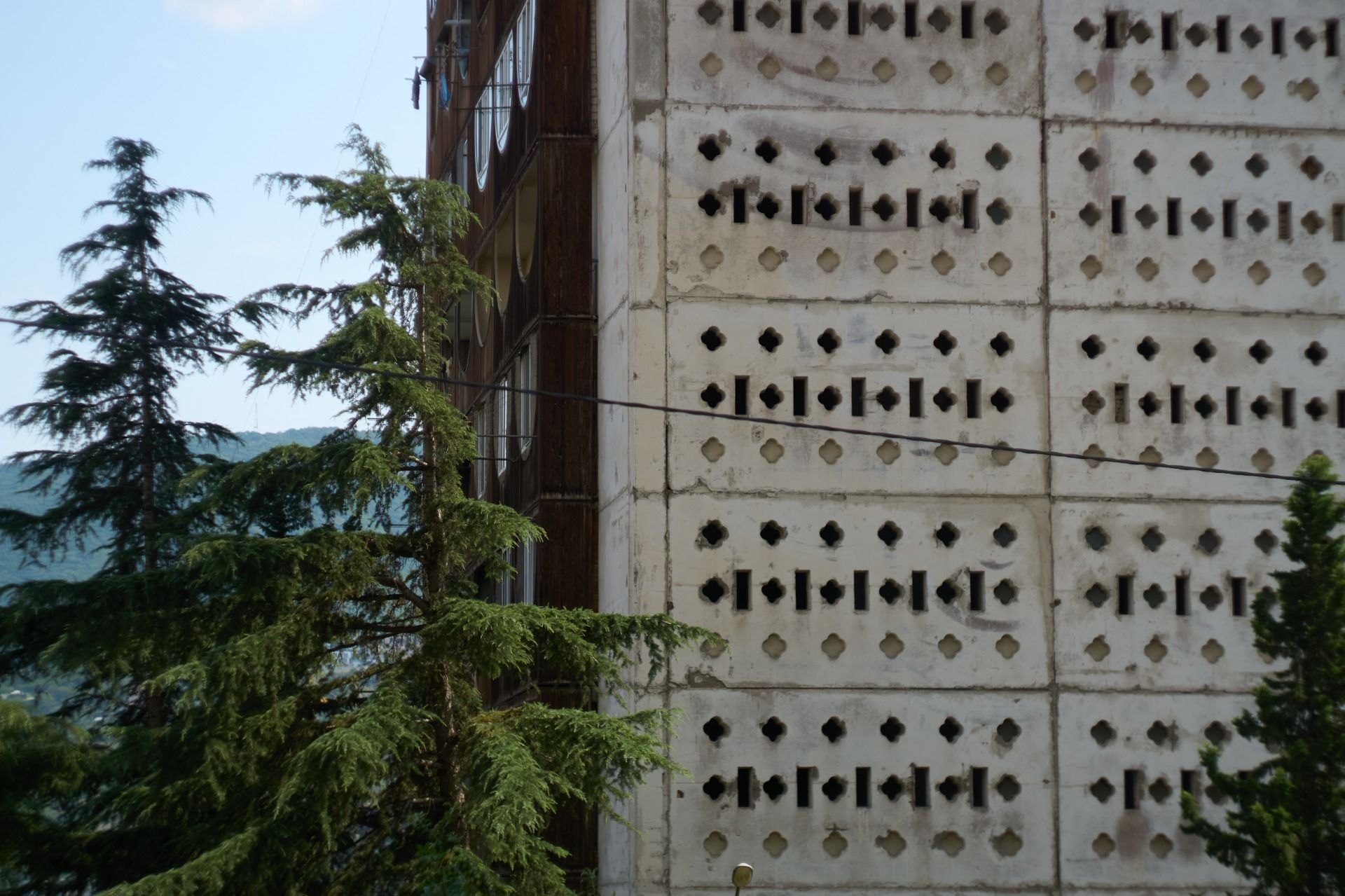
As you can see, this particular building is absolutely stunning. Truly beautiful. And its magic is increased with towering pine trees that surround. Though at the bottom was a more unique feature: a Soviet looking entrance to the street that was actually an active police station. It is worth mentioning that each of these apartment buildings are each active, and you can see its inhabitants standing on the beautiful balconies and overlooking the city, to which the views are utterly insane. I can't image how much one of these apartments must cost at this point, but I suspect it's an incredibly high cost due to the historical and cultural importance the building holds. I even stumbled across two European women that appeared in the area, to which they asked me how to get up to the skybridge itself. At that point I had no idea and was also roaming around trying to figure it out. There was the elevator, but there was a sign that suggested you had to pay to use it; I had previously read that there was a free way to do so, and thus this was my intent. It's interesting that a regular apartment building can pull people across the world and into the residential zones of Tbilisi.
It made me admire the fact that others had appeared, that there was interest in the beautiful architecture that had been both overlooked by many, and also attacked with odd agendas that come with hating Russia in the present. People incapable of disconnecting the creativity of architects long gone and the greed of current day politics.
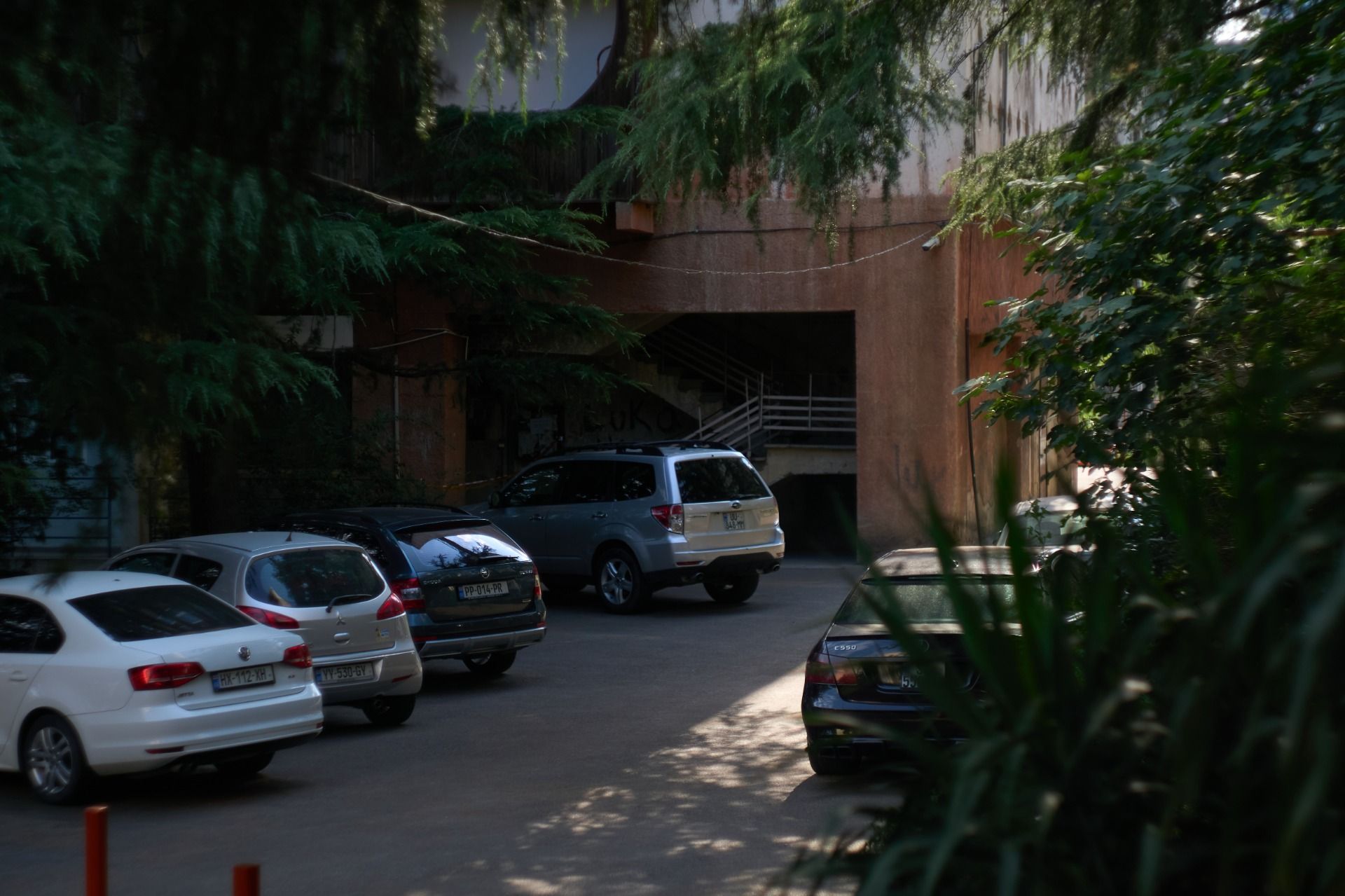
Here you can see the ground level of the first apartment building. It was covered in trees and growth, a really beautiful floral smell was present. This building in particular was the one that had been taken care of the most, for some reason. And despite the aforementioned assumed cost of living here, my guess is that everyone here owns the apartments, and have done for many, many years already. Mostly evident from the types of faces that came through to the base level of the buildings. Middle-aged, regular people that didn't look particularly well-off. If anything, mostly pertaining the visuals of somewhat poverty. A common theme in this part of the world, where one may assume the historical locations they live in must come at a high price, forgetting the ways in which this part of the world lived in before: communism. These homes would've been given to someone for free, then passed down to family members, a common practice here. On one of the balconies I saw a dog with floppy ears overlooking the city, two paws reaching up onto the side of the balcony. A shirtless, rather large man standing next to it.
At that point I had that reminder: these are not luxury apartments, these may be marketed as such in the event that they're finally sold. But those within have likely held these apartments for generations already. Way back to when they were first given out in the 70s.

I shot the photographs with my Soviet era Helios 44-2 lens. On the Sony A6000 which had been thrown onto an adapter for the camera. It only felt fitting to try to capture this group of apartments on something else rather impressive from a similar period of its history. I think it added a nicer touch which gave the images a bit more texture compared to the more modern 85mm lens I usually use that is more sharp. One thing this really worked nicely with was capturing those darker tones of the wood, alongside the beautiful pine trees that stood around. Those earthly tones really coming out nicely. I took a lot of photographs of just one building, I know, but there's really no other way to describe just how incredible of a sight this is, especially when you look around and see the chaos of the present day, and its crazy pursuit of endless development of buildings that just never seem to hold the same level of identity. And this brings me to another point: it's clear these buildings are living on borrowed time. At the ground level, you could see the decay. Parts of the apartments crumbling from neglect. And at the top: the same story. Holes in the bridge itself which sent your vision all the way down to the ground. A terrifying sight.
This was also met with some jokes in the form of text next to the hole which said: " Free Google Street View here!" A fun bit of humour which made light of the fact that the bridge really did not feel safe anymore, but I couldn't help but continue walking across it.
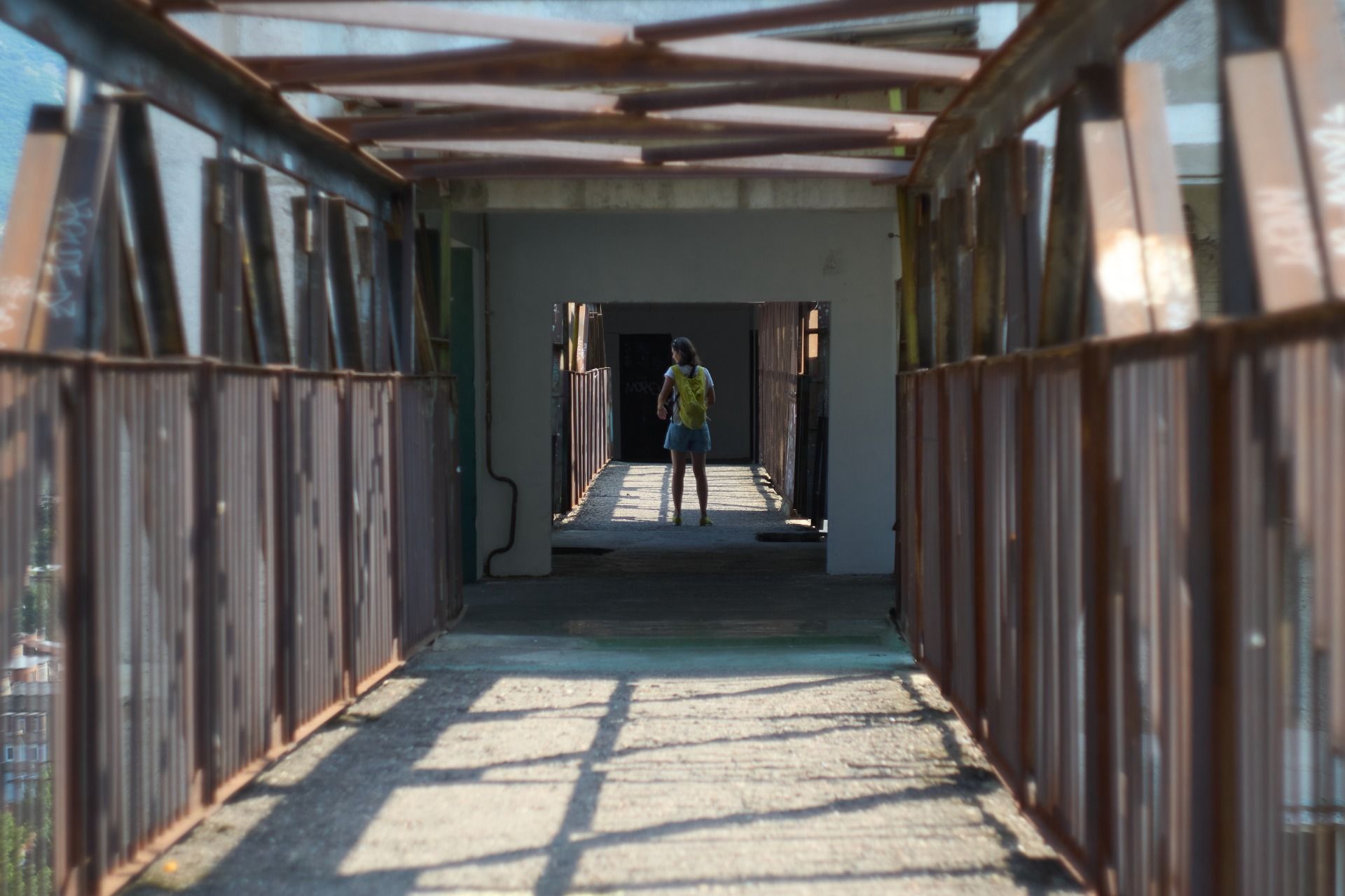
The two women seemed to have discovered the free entrance around the same time I did as we previously went our separate ways. At one point across the bridge I noticed one of them standing in the middle. The composition was too good to pass up. Though I typically wanted to capture the empty space, it was a difficulty as for some reason the skybridge became incredibly busy out of nowhere. I'm not sure what was going on, whether these people were locals or not. Part of me suspected that people were using it to cross to the third (the most interesting) building, and using its elevator to get to the ground level where there was no other access to that area without a lengthy walk around bending roads. This is likely the case, and it's actually quite neat that people found a use for it that doesn't just relate to the inhabitants of these apartments only. Instead allowing it all to serve as perhaps an unplanned shortcut to a lower part of the area where the shops were. And I guess from here it's about time to start showing the view from the bridge itself. An incredible view that detailed all of Tbilisi. One of the best views of it all I have had so far, and I can see why something like this would be considered such a great accomplishment in that era.
Such pride in the views, such pride in the architecture and design. Connecting people to the city in all ways imaginable. Giving them something to care for and feel. I really felt that up there, even as the buildings seemed in pretty bad shape in areas.
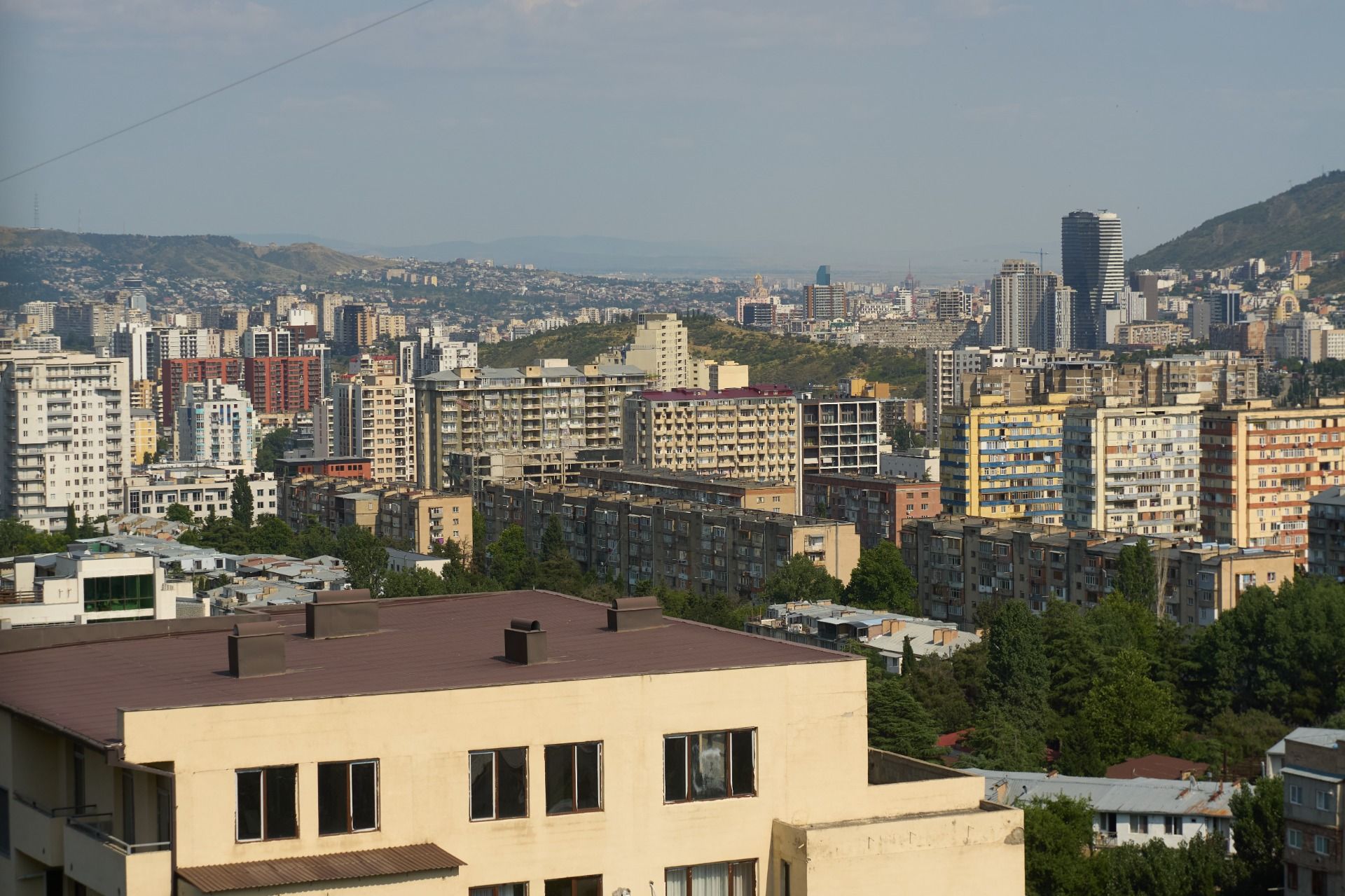
Here you can see all of those old Soviet era buildings. All the rustic ones met with the more modern ones. I like that in Tbilisi there is a nice mixture of old and new, but you can really see which ones came from a different era and totally different mentality. The breeze up there was really nice, to which I briefly imagined how it must feel to live in such an apartment, and I'm sure to most that do live there, they don't really care. Such familiarity to it all to the point in which it feels normal. Perhaps they don't even notice the architecture anymore. Perhaps to them they don't really notice that they live in a group of buildings that are considered a tourist attraction on search engines. Isn't that odd? To live in a building that is considered a tourist attraction purely because of its design now fifty years prior? But that's the importance of architecture, I think. To continue to give people feelings even as the interests and mentality of society shift by the decade. To end up being timeless in a sense. Standing out in any generation. It's impressive, and I haven't ever seen buildings have such beauty to them. Such attention to creativity and really making a difference on the landscape, all while appealing to the convenience of those that live within that space.
These days that doesn't seem to be the case, it feels quite the opposite as developers aim to build anywhere they possibly can without much engagement with the space.
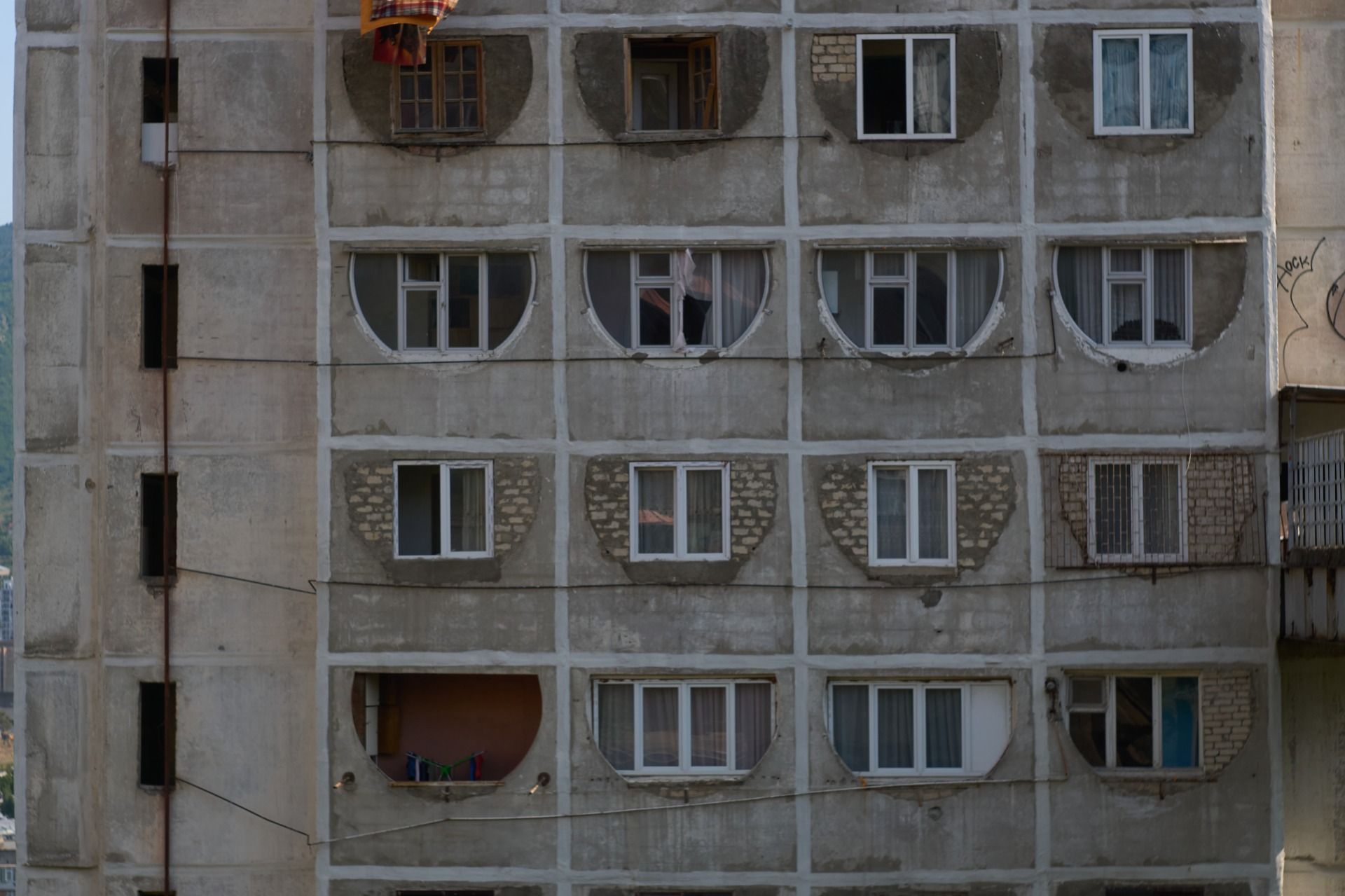
A common sight in this region is how people customise their apartments as the years go by. The little differences made to fix up and maintain as problems arise. Often utilising a few cheaper methods that aren't entirely safe. A lot of the problems in these older buildings tends to come from the fact that people just built whatever they wanted to the buildings they lived in, rarely caring for the safety or how others may feel about it all. You can see here that many of the inhabitants changed their balconies. Adding windows and lazily using brickwork that doesn't suit the original style of the building. A bit of a tragedy, really. As the building's identity will shift and lose its safety as a home as a result. These three buildings have varying decay, some far worse than the others. One of the reasons I didn't want to get into the elevator was a slight concern that it simply wouldn't work. They were incredibly old, still having their Soviet interiors. A beautiful sight, but certainly not the most trustworthy trip upward into a building, especially when signs say not to take certain elevators down, only up. That definitely doesn't add to the confidence in the safety.
Though it seems the people that live here don't care. They're used to it all. For them this building remains home. I'll now throw in a few final photographs to end this post, but this was a wonderful experience, such a beautiful space. I recommend it if you ever end up in Tbilisi.
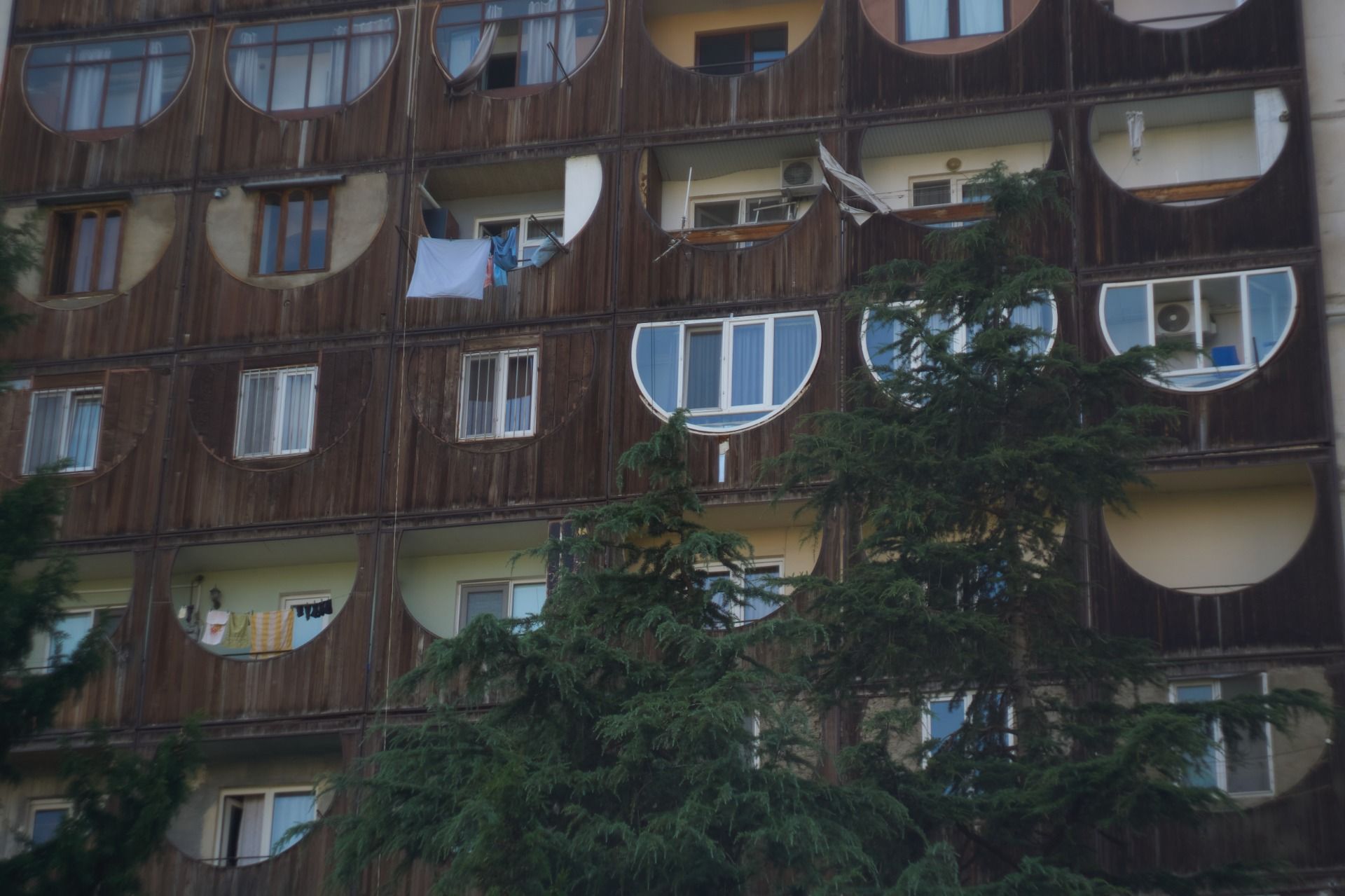


If you made it this far into the post, consider this a reminder to appreciate the old architecture around you, even if the place seems like a rustic pile of trash these days. Consider the stories it holds, and the idea of preserving them by photographing them and spreading their name.
